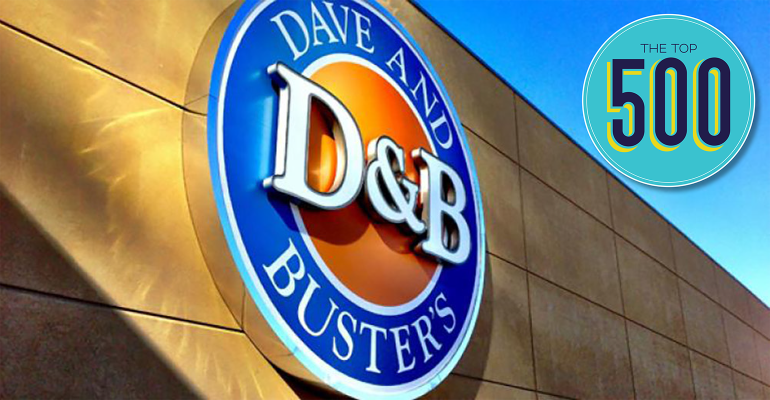Dave & Buster’s unit count remained relatively flat from 2021 to 2022. The Coppell, Texas-based eatertainment concept finished last year with 142 restaurants to rank 181st overall by locations, according to Datassential’s annual Top 500.
The full-service sports bar concept’s sales, however, had a wildly different year-over-year narrative. In 2021, Dave & Buster’s generated over $434 million in sales. In 2022, that number jumped by over 54%, to just over $670 million. The chain’s estimated sales per unit also increased by over 50% — from $3.1 million in 2021 to $4.7 million in 2022. Dave & Buster’s sales gains helped the chain move up to No. 80 in the Datassential Top 500, from No. 99 in 2022, leapfrogging chains like MOD Pizza, Smoothie King, Noodles & Company, Portillo’s and Captain D’s.
What’s driving this sales surge? For starters, there is a pent-up demand for experiences after two-plus years of uncertainty, and Dave & Buster’s offers plenty of arcade-like experiences, as well as food and drink, to provide that one-stop value. Despite recessionary signals, Datassential notes that consumers are still very much craving experiences they can’t re-create at home, to the benefit of eatertainment concepts like Dave & Buster’s. This demand largely helped the chain weather an otherwise challenging 2022 filled with wage and food cost pressures, and its momentum is expected to continue into 2023 despite those macroeconomic pressures continuing.
The chain also got a lift from its mid-2022 acquisition of fellow eatertainment chain Main Event for $835 million. At the time of the deal, the company called the opportunity “enormous,” noting that the two concepts complement each other. Dave & Buster’s tends to appeal to young adults, for instance, while 50-unit Main Event is a destination for families with young children.
Like Dave & Buster’s, Main Event is also well positioned to meet experiential demand. In a white paper released in January, foot traffic data firm Placer.ai summarized its bullishness on both companies, stating, “as more people seek out unique activities, the company’s ability to reach both families and singles through the two brands should continue to serve it well in the new year.”
So far, 2023 has proven as much. In its fourth quarter ended Jan. 29, Dave & Buster’s reported a record $564 million in revenue — up 64% from the prior quarter. Combined comp sales including Main Event branded stores were up 19% on the quarter and up 14.1% versus 2019. Throughout the past few quarters, CEO Christopher Morris has attributed “robust” walk-in sales and strength in the company’s special events business for driving much of this growth.
Additional momentum is also expected to come from the benefits of scale realized from the Main Event acquisition. In Q1, for instance, the company said it expects to save about $20 million in the next two years from store support center consolidation and supply chain efficiencies.
With the Dave & Buster’s and Main Event consolidation came a new leadership team. Morris assumed the CEO role in 2022, with Michael Quartieri named CFO, Tony Wehner named COO, and Ashley Zickefoose named CMO.
Contact Alicia Kelso at [email protected]





